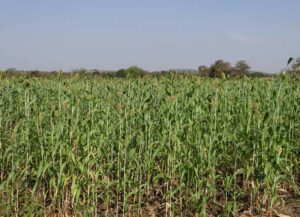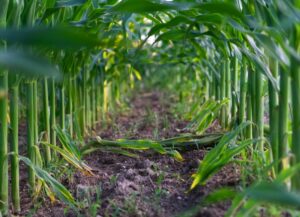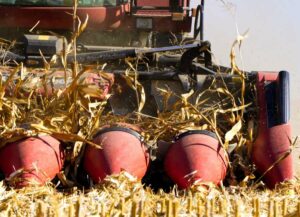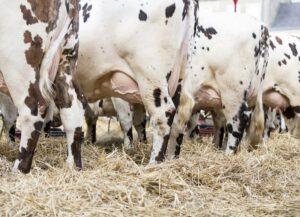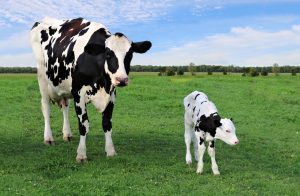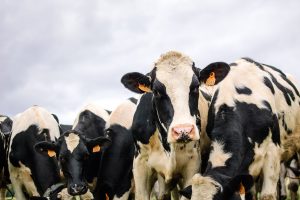Álvaro García
Sorghum is a genus of flowering plants in the grass family Poaceae. Some of its species have been grown for a long time around the world as cereal grains for humans and livestock, as well as forage for grazing ruminants.
Sorghum bicolor originated in Africa and can be now found throughout the world used for human food, sorghum molasses, alcoholic beverages, and as biofuel. Sorghum is particularly tolerant to dry and warm conditions providing food and forage in arid and tropical regions of the world.
Sorghum characteristics
The plant contains phenolic acids and grain flavonoids, which are important plant protective components against ultraviolet radiation, herbivores, and diseases. During the early vegetative stages and under certain stress conditions some sorghum species can contain hydrogen cyanide and nitrates at enough concentrations to constitute a health hazard for grazing herbivores.
There has been a renewed interest to use sweet sorghum for ethanol production and as forage for livestock particularly in areas where environmental conditions do not allow corn to thrive. One of the drawbacks however is that the digestibility of the structural carbohydrates of sweet sorghum cultivars is relatively low as well as is its content in sugars.
During the process for ethanol production, the sugars from sweet sorghum are removed, and the fibrous part is left and it’s what’s called “bagasse”. This byproduct has been used extensively in cattle production in tropical climates but since its availability changes, it needs to be preserved adequately until it is finally fed. One such method of preservation is by ensiling.
An experiment (Orrico et al. 2020) was conducted at the University of Florida, Range Cattle Research and Education Center, to address the feasibility of ensiling sweet sorghum. The objective was to evaluate the effects of ensiling different plant fractions on their nutritive value and fermentation characteristics with or without the use of microbial inoculation.
The experiment was divided into two parts. Experiment 1 consisted of ensiling different plant fractions:
- whole plants (leaves, stem, and inflorescence)
- stems only
- bagasse (stem pressed to remove the juice)
Experiment 2 was designed as a 3 × 2 factorial with the same three plant fractions from Exp. 1 but now with or without microbial inoculant containing Pediococcus pentosaceus and Lactobacillus buchneri.
The accumulated and monthly average rainfall during the experiment period in 2012 and 2013 were 670 and 811 mm and 112 and 136 mm/mo, respectively.
Sweet sorghum cultivar EJ 7281 (Blade Energy Crops, Thousand Oaks, CA) was cultivated to achieve a plant population of 88,000 plants/ha. Irrigation was used when rainfall was <25 mm/week, and harvesting was at the early hard dough stage.
The plants were harvested by hand at 5-cm stubble height, chopped with a woodchipper to 3.5-cm particle size, and ensiled in mini-silos (PVC pipes) to contain approximately 2 L in volume. The packing density was 600 kg of fresh forage/m3 and then sealed with rubber caps. At the time of ensiling, the forage had a dry matter (DM) content of 25 ± 3% and the mini silos were stored at ambient temperature for 180 days.
The microbial inoculant added in experiment 2 was diluted with deionized water (300 mg/L of deionized water) and applied before ensiling with a hand sprayer. The control treatments were treated with the same amount of deionized water.
Sorghum silage characteristics of the whole plant, stems, and bagasse
Results of this experiment showed, as could be expected, that the bagasse silage had greater DM, neutral detergent fiber (NDF), and acid detergent fiber (ADF) and less nonfibrous carbohydrates (NFC) and total digestible nutrients (TDN) concentrations than whole plants or stems (table 1). Whole plants silage had more protein and lactic and acetic acids and lower pH than bagasse. The bagasse had greater yeast counts than whole plant and stems.
Experiment 2 showed no differences in pH among treatments, and all three were adequate for preservation. Despite this, the whole plant silage had greater TDN and lactic acid concentrations than the bagasse, and whole plant silage treated with inoculant had greater protein and NFC.

Sweet sorghum responded well to ensiling since it had adequate amounts of NFC, which resulted in silage with nutritive value and fermentation characteristics that render it as a useful feed for livestock. The whole plant silage lost less DM, had an acceptable nutritive value, and desirable fermentation profile.
Conclusions
As could be expected the sweet sorghum bagasse had less nutritional value, but it can still be used in animal categories with fewer nutrient requirements. From this perspective, it could be a valuable feed to be incorporated in diets for dry dairy cows, mature non-lactating beef cows, or growing heifers provided the diets are adequately balanced. The use of an inoculant seems to be justifiable when ensiling whole plant, it does not seem to be justified in the bagasse silage though. The main advantage is that the sweet sorghum bagasse is a byproduct that needs to be disposed of, so it may be obtained at a reduced cost.
Reference
M.A.P. Orrico Junior, J.M.B. Vendramini, J. Erickson, P. Moriel, M.L.A. Silveira, A.D. Aguiar, J.M.D. Sanchez, Wilton L. da Silva, Hiran M. da Silva. Nutritive value and fermentation characteristics of silages produced from different sweet sorghum plant components with or without microbial inoculation. Applied Animal Science, Volume 36, Issue 6, 2020, Pages 777-783, ISSN 2590-2865.
© 2021 Dellait Dairy Knowledge Center. All Rights Reserved.



